Invisible Men: charting workwear’s influence on fashion
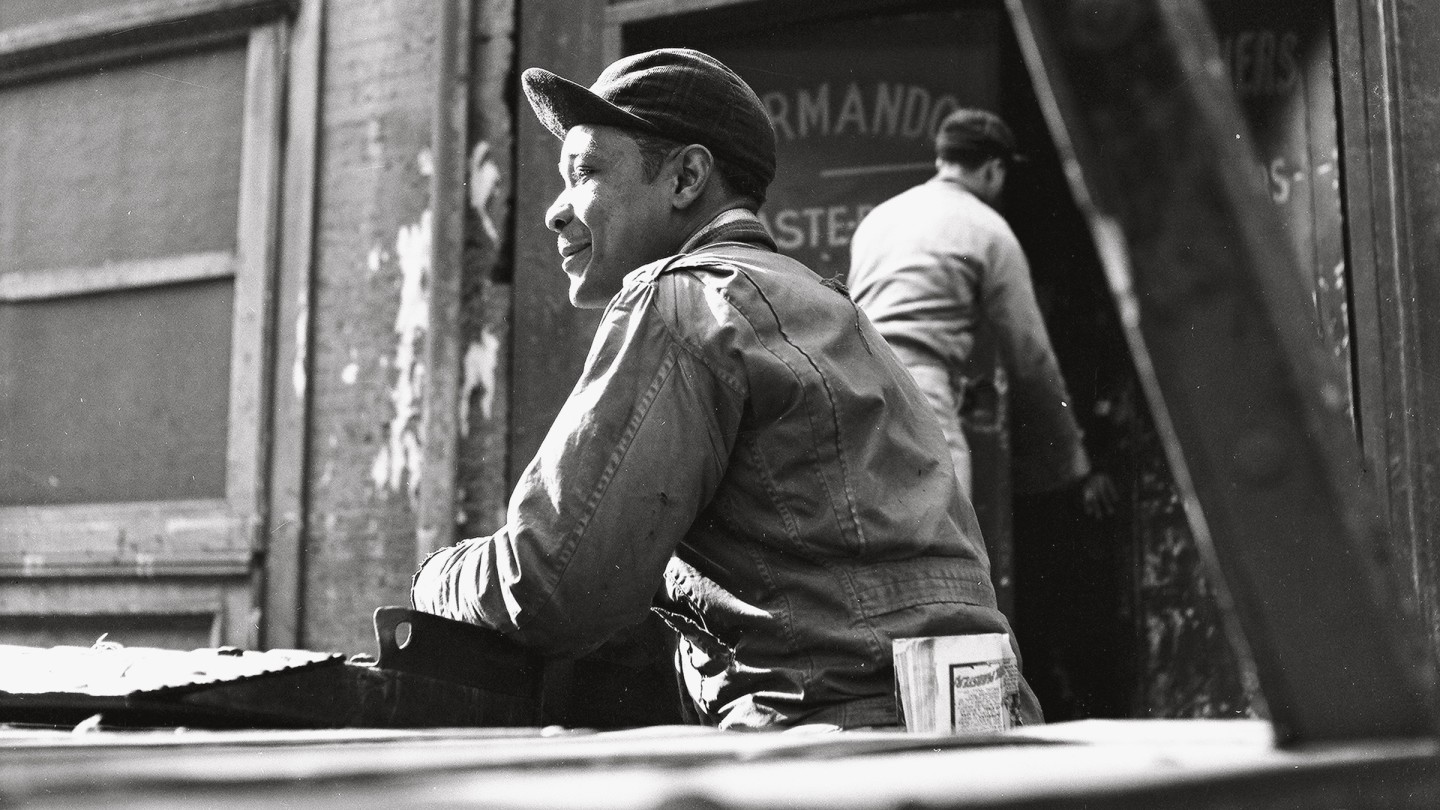
Roula Khalaf, Editor of the FT, selects her favourite stories in this weekly newsletter.
The vast subterranean hall opposite Madame Tussauds in London has a curious life story. Once a hub of industrial innovation (it was a concrete testing bunker instrumental in the creation of the Channel Tunnel) the space has been used for the past few years as a blank canvas for art and fashion events, with well-dressed guests trooping through its murky loading bays before descending into 14,000sq ft of dazzling lights, champagne and photographers.
Next month, Ambika P3 – as the space is now known – will be filled with rows of mannequins displaying 170 outfits from the University of Westminster’s impressive menswear archive of more than 1,700 items. It is the largest exhibition of its kind to be staged in the United Kingdom. Yet while the scale is impressive, it’s the curatorial angle that is most interesting. As a riposte to the flamboyance and dandyism that the Met showcased in New York this year as part of its Camp exhibition, the Invisible Men show in London looks at the perennial influence of workwear and military wear in men’s style.
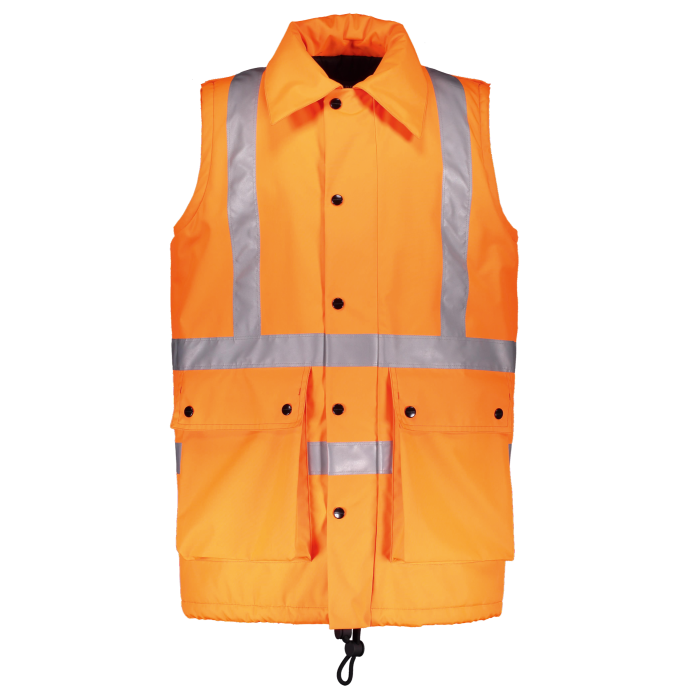
“One of the key pieces we are showing is a reinterpretation of a railway worker’s high‑vis utility coat that appeared in Christopher Bailey’s final runway collection for Burberry,” says Professor Andrew Groves, co-curator of the show and director of the BA Fashion Design course at the university. “It’s strikingly similar to its original source garment, but it is the small details – the Burberry-embossed poppers and the signature jacquard lining – that transform it into high fashion.” Groves and his fellow curator Dr Danielle Sprecher have selected garments that illustrate how menswear designers have often used practical uniforms as points of reference for their own designs. A Stone Island zeltbahn cape, Prada denim overalls and a CP Company leather gilet jacket are displayed alongside original post office, army, police and labouring uniforms.
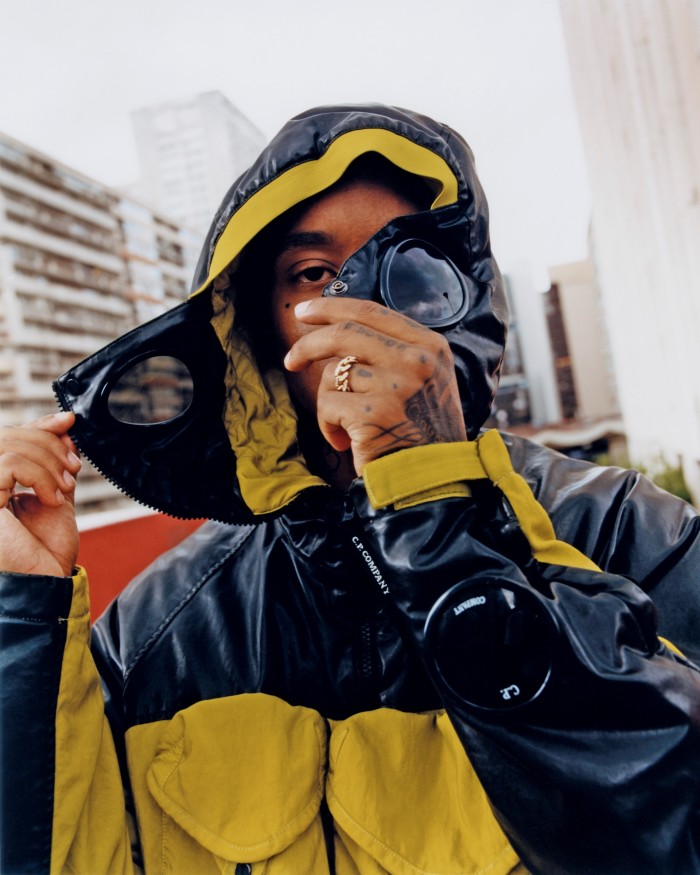
One of the biggest sections in the exhibition is dedicated to a collection produced by CP Company between 1997 and 2001. “The Urban Protection range was one of the most forward-thinking and innovative menswear collections and is still referenced by contemporary designers today,” explains Groves. “Designer Moreno Ferrari created garments that featured gas detectors, microcomputers, lights, torches, inflatable cushions, scooters and even a cape that transformed into a hammock.”
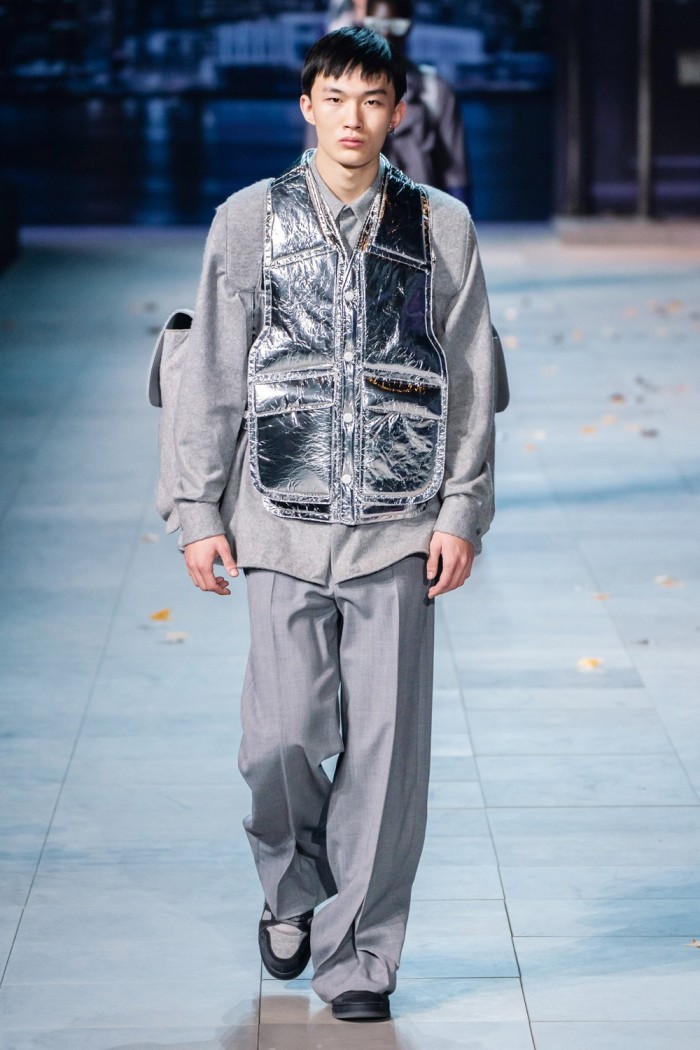
The more subdued pieces the brand makes today – utility gilets or waterproof goggle jackets – are similarly inspired by old uniforms. “As it was for my father Massimo Osti, who founded the brand in 1971, CP Company’s creative process is deeply linked with archive research,” says Lorenzo Osti, president of the Italian fashion label.
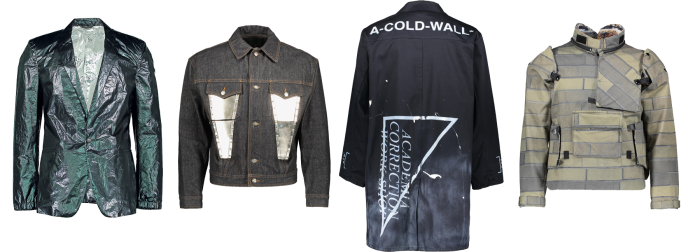
Some of the most innovative, directional design today remains rooted in workwear and uniforms. Craig Green is a London-based designer known for his esoteric approach to sportswear and his highly conceptual fashion shows. But for all the attention-grabbing pieces there is bread and butter: his quilted worker jacket has been a bestseller since it first appeared in 2015. “It is inspired by traditional worker jackets, judo suits, protective armour and the internal layers of spacesuits,” explains Green. “The way that the fabric and garment are constructed also means that the worker jacket does not have any kind of traditional structuring, so it can easily be folded for packing and travelling.”
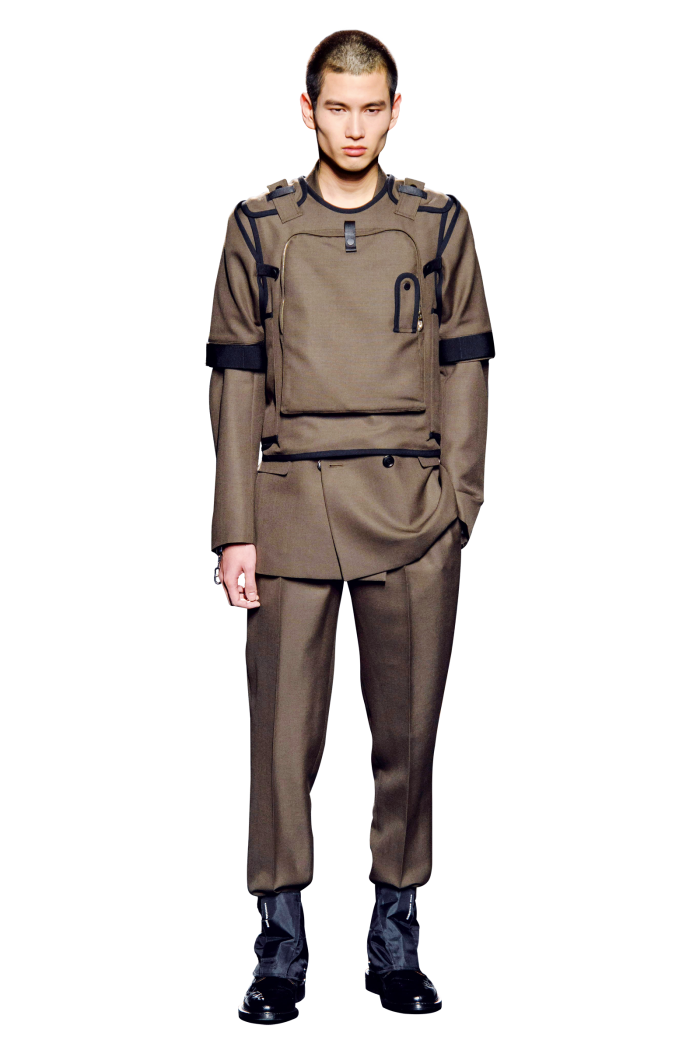
Green puts the lasting attraction of workwear and uniforms down to comfort. “Workwear is almost a version of relaxed tailoring,” he says. “Garments that are easy to work and live in represent a form of luxury for many people. And the uniform aspect of workwear is important for menswear – the feeling that you are part of something and belonging to a group.”
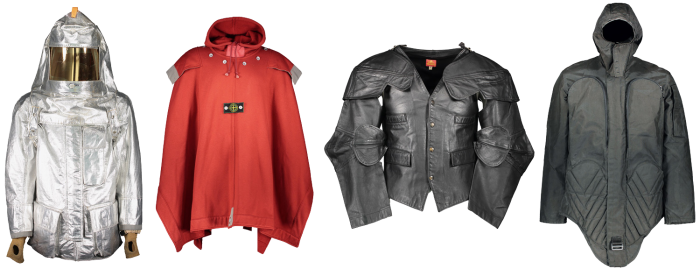
When editors compile their trend reports each season, the appearance of “military” and “workwear” on the list is moot. In current menswear collections, there are metal buckles and golden button embellishments at Yohji Yamamoto; a camouflage field jacket at Virgil Abloh’s Off-White; and military drill trousers with elasticated cuffs at Gucci. The offering at Savile Row tailoring house Gieves & Hawkes owes much to its heritage as a supplier to the British Army and the Royal Navy. “None of the perennial favourites from Gieves & Hawkes – the blazer, the pea coat, the greatcoat – would be possible without our history with naval and military tailoring,” says its creative director John Harrison. “Elegance coupled with genuine utility are extremely powerful design principles to adhere to.”
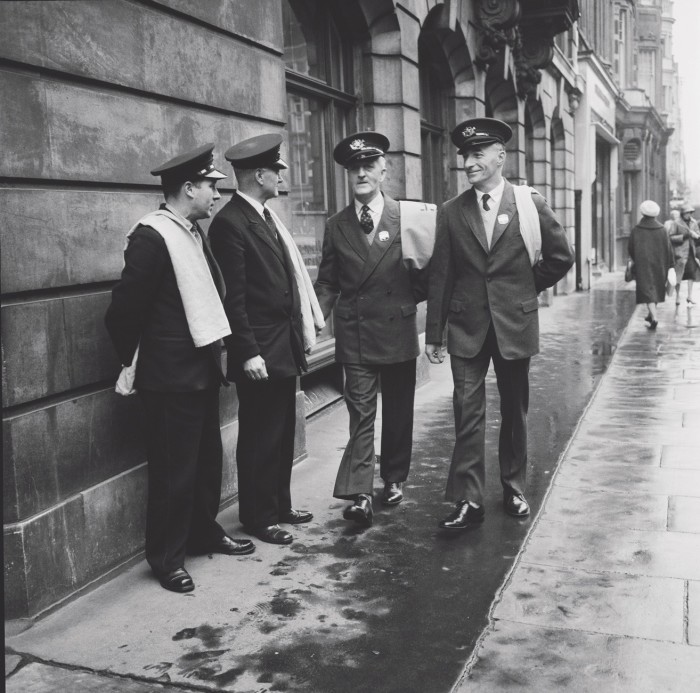
While there is a strictness to military and workwear, combining them with the more relaxed modes of sportswear has led to interesting tailoring hybrids. “The mixture between sport and luxury clothing plays into the workwear/travelwear market, which is primarily how people are dressing for everyday life,” says designer Oliver Spencer. “It can be dressed up and down and small tweaks to the choice in fabric and cut can create new, inspiring pieces.”
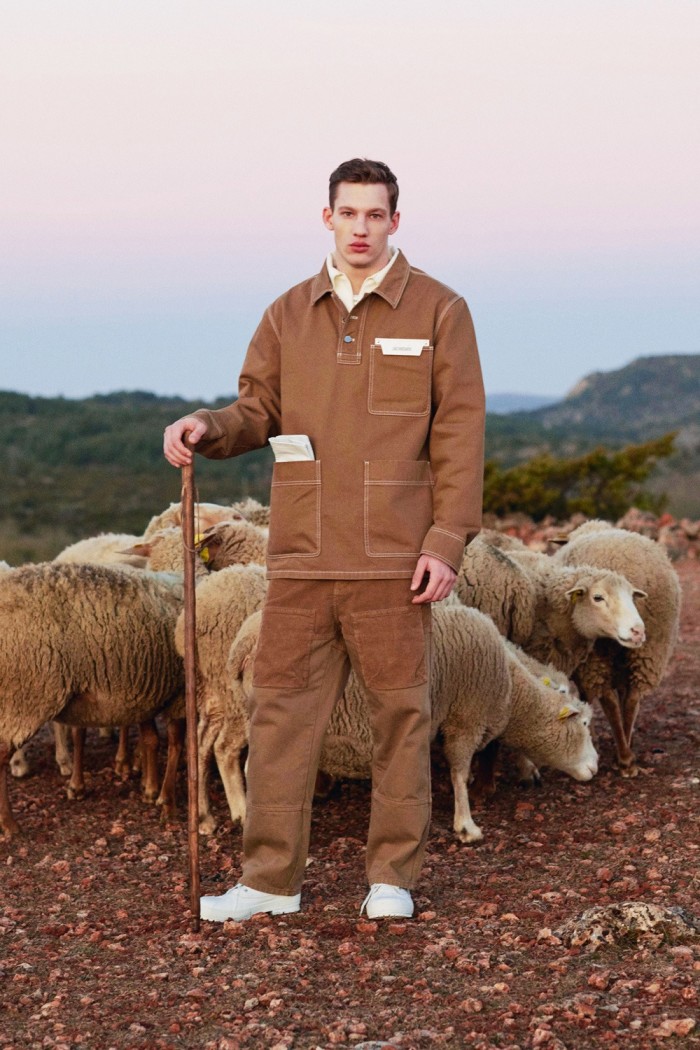
Coveralls, which feature heavily in the exhibition, have also enjoyed a resurgence of late – we saw them at Louis Vuitton in 2017, Prada, Katharine Hamnett and most recently at Connolly as part of its collaboration with Goodwood. For next season, John Alexander Skelton has produced a set of overalls in Irish linen. “Now, more than ever, people want a really multifunctional wardrobe and items they can wear all the time that are practical but also beautiful,” says Skelton. “Elevating and rethinking militaria and workwear creates clothing that has all these qualities.”
Katharine Hamnett is another designer who has reinterpreted the utilitarian jumpsuit, while also elevating workwear shapes in silk. She suggests workwear and military codes have another very obvious appeal to her customer: “Utility clothing is worn by men with physical jobs, so represents a traditional macho view of manhood.” This is fashion with sex appeal. Which is, of course, one of the reasons why we choose the clothes we do.
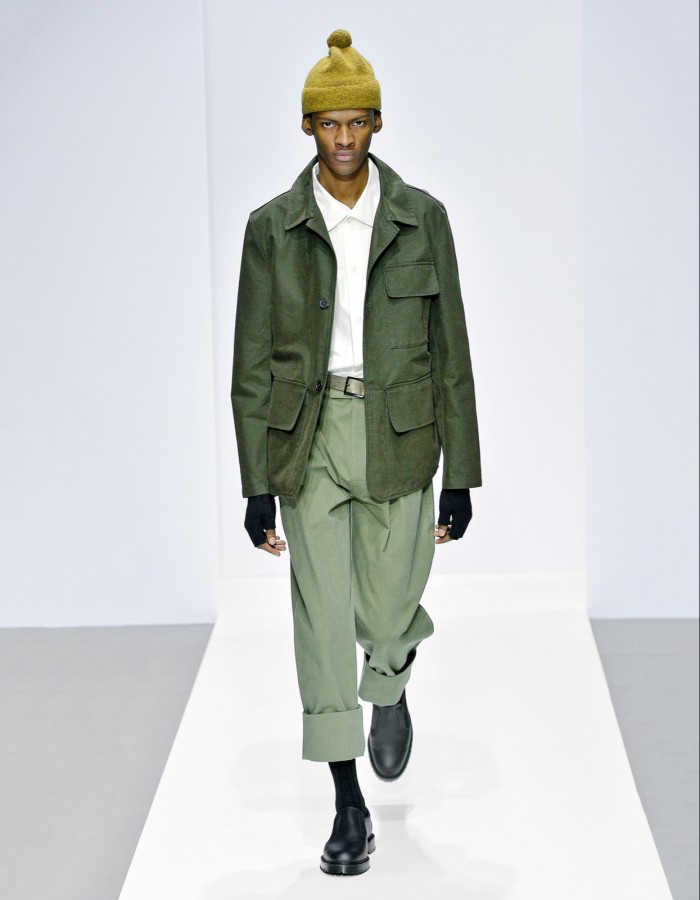
We also select them for function. As designer Margaret Howell says: “Workwear is fit for purpose, comfortable and avoids decoration. It also softens, fades and creases, gaining character over time.” She has continually taken inspiration from vintage overalls, windcheaters and dungarees and created her own versions of them. Utilitarian style is an inherent part of the Howell aesthetic. “I regard them as design classics like good furniture or architecture,” she says. “Dieter Rams put it perfectly: ‘Good design avoids being fashionable and therefore never appears antiquated.’”
Invisible Men is at Ambika P3 from October 25 to November 24 2019; invisiblemenexhibition.com.
Comments